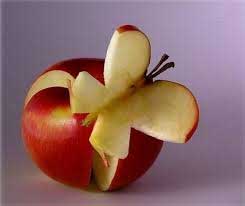Creativity Times Two
The Merriam-Webster Dictionary defines Creativity as: the ability to make new things or think of new ideas.
Whenever I think of creativity, I remember the story of eight year old Abbey Fleck who, after seeing the mess cooking bacon in the microwave made, invented a bacon rack for the microwave that allows for the fat to drain off into a reservoir. Clearly some people are more creative than others, but what if there was a way to improve your creativity? Keep reading.
I just finished a fascinating book about how outside stimuli such as color, texture, temperature subconsciously affect our thoughts and decisions. The book is SENSATION: The New Science of Physical Intelligence by Thalma Lobel PhD. Throughout the book, Dr. Lobel discusses how many metaphors we take for granted are actually proven fact and she uses examples of worldwide testing to prove these. A few are: cold world (connecting cold with lonely), warm heart (connecting warm with friendly), rough day (connecting rough with difficult), smooth sailing (connecting smooth with pleasant.)
The metaphors for creativity are: on the one hand and on the other hand (to look at a problem from two different sides), thinking outside the box (to think of something in a different way), and putting two and two together (seeing what develops by adding ideas to one another).
Exercise One: On the one hand and on the other hand.
I’m not going to repeat the full studies done in the book: if you’re still skeptical after trying this exercise read chapter 11 of Dr. Lobel’s book. Basically, researchers tested a group of participants to see if one could become more creative by just raising one hand in the air while thinking of a problem and then lowering it and raising the other hand. They were tested against a group that only raised one hand in the air. Results showed that those who raised both hands in the air offered more ideas and that their ideas were more original and flexible than the group that only raise one hand.
Exercise Two: Thinking outside the box.
This is so easy and it works. One group of participants took a creativity test while seated inside a five-foot square box. A second group took the test seated outside and around the box and a third group took the test with no box in the room. The participants seated outside the box correctly solved more creativity problems than the other two groups.
Next time you have a problem to solve sit next to a box. It’s as easy as that!
Exercise Three: Putting two and two together.
Sometimes we have all the information we need to solve a problem we just need to look at it differently. For this experiment, researchers took a stack of coasters and cut them in half. For one group of participants, one half of the stack was placed on the left and the other half on the right. The participants were then asked to simultaneously take one piece from the left and one from the right stack and combine them into one piece in the center of the table. A second group of participants were given all the halves stacked into one stack and told to take one at a time and place it in the center of the table. Thus one group was combining pieces and the other group was simply moving pieces. Both groups were then given the Remote Associates Test and the group who physically put pieces together into one solved the most creative problems.
Give these exercises a try and let me know if they work for you. Right now, I’m going to the garage to look for a box.





Nice blog.
Gives me something to think about — with both hands:)
Bette, you’re a painter, sculptor, and writer. Not sure you need help with creativity! I think you nailed that bird.